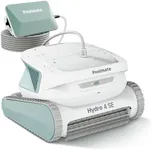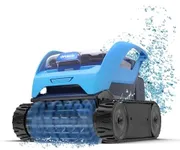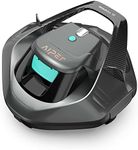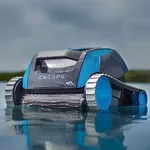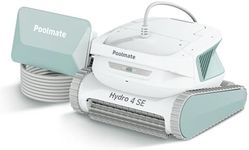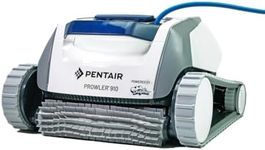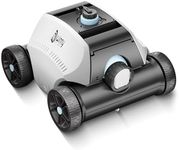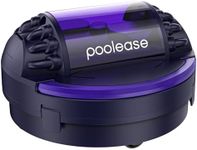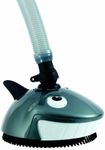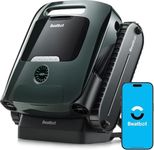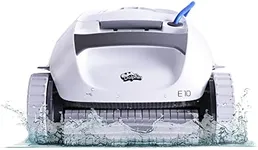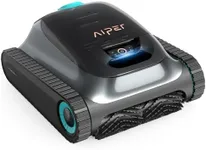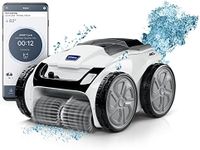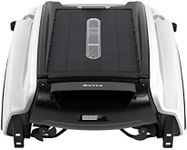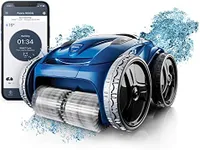Buying Guide for the Best Above Ground Automatic Pool Vacuum
Choosing the right above-ground automatic pool vacuum can make maintaining your pool much easier and more efficient. These devices are designed to clean your pool with minimal effort on your part, but there are several key specifications to consider to ensure you get the best fit for your needs. Understanding these specs will help you make an informed decision and keep your pool sparkling clean with ease.Type of CleanerAbove-ground automatic pool vacuums come in different types, such as suction-side, pressure-side, and robotic cleaners. Suction-side cleaners attach to your pool's existing filtration system and are generally more affordable. Pressure-side cleaners use the pressure from your pool's pump to move around and collect debris, often requiring a booster pump. Robotic cleaners are self-contained units that operate independently of your pool's filtration system and are typically the most efficient and easy to use. Your choice should depend on your pool's setup and your preference for convenience and efficiency.
Cleaning CoverageCleaning coverage refers to the areas of the pool that the vacuum can clean, such as the floor, walls, and waterline. Some vacuums are designed to clean only the pool floor, while others can handle walls and even the waterline. If your pool tends to accumulate debris on the walls or at the waterline, you might want to consider a vacuum with comprehensive cleaning coverage. Assess your pool's cleaning needs to determine the right level of coverage for you.
Filtration System CompatibilityIt's important to ensure that the pool vacuum you choose is compatible with your pool's existing filtration system. Suction-side cleaners rely on your pool's pump and filter, so they need to be compatible with your system's flow rate and capacity. Pressure-side cleaners may require a booster pump, so check if your system can accommodate one. Robotic cleaners are independent of your pool's filtration system, making them a versatile choice for any setup. Understanding your pool's filtration system will help you choose a vacuum that works seamlessly with it.
Debris HandlingDifferent pool vacuums handle debris in various ways. Some have their own filter bags or cartridges, while others rely on your pool's filtration system to collect debris. If your pool tends to collect larger debris like leaves and twigs, look for a vacuum with a larger debris capacity or one that can handle larger particles. For finer debris like sand and dirt, a vacuum with fine filtration capabilities is essential. Consider the type and amount of debris your pool typically accumulates to choose a vacuum that can handle it effectively.
Ease of UseEase of use is an important factor, especially if you prefer a low-maintenance solution. Robotic cleaners are generally the easiest to use, as they are plug-and-play and often come with programmable settings. Suction-side and pressure-side cleaners may require more setup and maintenance, such as connecting hoses and adjusting settings. Consider how much time and effort you are willing to invest in setting up and maintaining your pool vacuum. If convenience is a priority, a robotic cleaner might be the best choice.
Energy EfficiencyEnergy efficiency is an important consideration, especially if you are concerned about operating costs. Robotic cleaners are typically the most energy-efficient, as they use low-voltage power and operate independently of your pool's pump. Suction-side and pressure-side cleaners rely on your pool's pump, which can increase energy consumption. If energy efficiency is a priority, look for a vacuum with energy-saving features or consider a robotic cleaner. Assess your energy usage and preferences to choose a vacuum that aligns with your efficiency goals.
